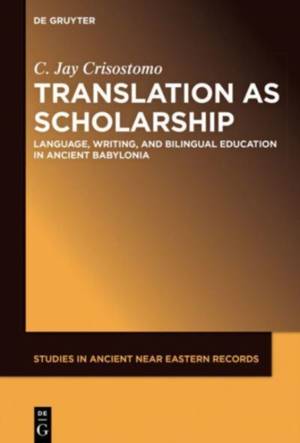
- Afhalen na 1 uur in een winkel met voorraad
- Gratis thuislevering in België vanaf € 30
- Ruim aanbod met 7 miljoen producten
- Afhalen na 1 uur in een winkel met voorraad
- Gratis thuislevering in België vanaf € 30
- Ruim aanbod met 7 miljoen producten
Translation as Scholarship
Language, Writing, and Bilingual Education in Ancient Babylonia
Jay CrisostomoOmschrijving
In the first half of the 2d millennium BCE, translation occasionally depicted semantically incongruous correspondences. Such cases reflect ancient scribes substantiating their virtuosity with cuneiform writing by capitalizing on phonologic, graphemic, semantic, and other resemblances in the interlingual space. These scholar-scribes employed an essential scribal practice, analogical hermeneutics, an interpretative activity grounded in analogical reasoning and empowered by the potentiality of the cuneiform script. Scribal education systematized such practices, allowing scribes to utilize these habits in copying compositions and creating translations.
In scribal education, analogical hermeneutics is exemplified in the word list "Izi", both in its structure and in its occasional bilingualism. By examining "Izi" as a product of the social field of scribal education, this book argues that scribes used analogical hermeneutics to cultivate their craft and establish themselves as knowledgeable scribes. Within a linguistic epistemology of cuneiform scribal culture, translation is a tool in the hands of a knowledgeable scholar.
Specificaties
Betrokkenen
- Auteur(s):
- Uitgeverij:
Inhoud
- Aantal bladzijden:
- 521
- Taal:
- Engels
- Reeks:
- Reeksnummer:
- nr. 22
Eigenschappen
- Productcode (EAN):
- 9781501516665
- Verschijningsdatum:
- 14/01/2019
- Uitvoering:
- Hardcover
- Formaat:
- Genaaid
- Afmetingen:
- 156 mm x 234 mm
- Gewicht:
- 902 g

Alleen bij Standaard Boekhandel
Beoordelingen
We publiceren alleen reviews die voldoen aan de voorwaarden voor reviews. Bekijk onze voorwaarden voor reviews.











